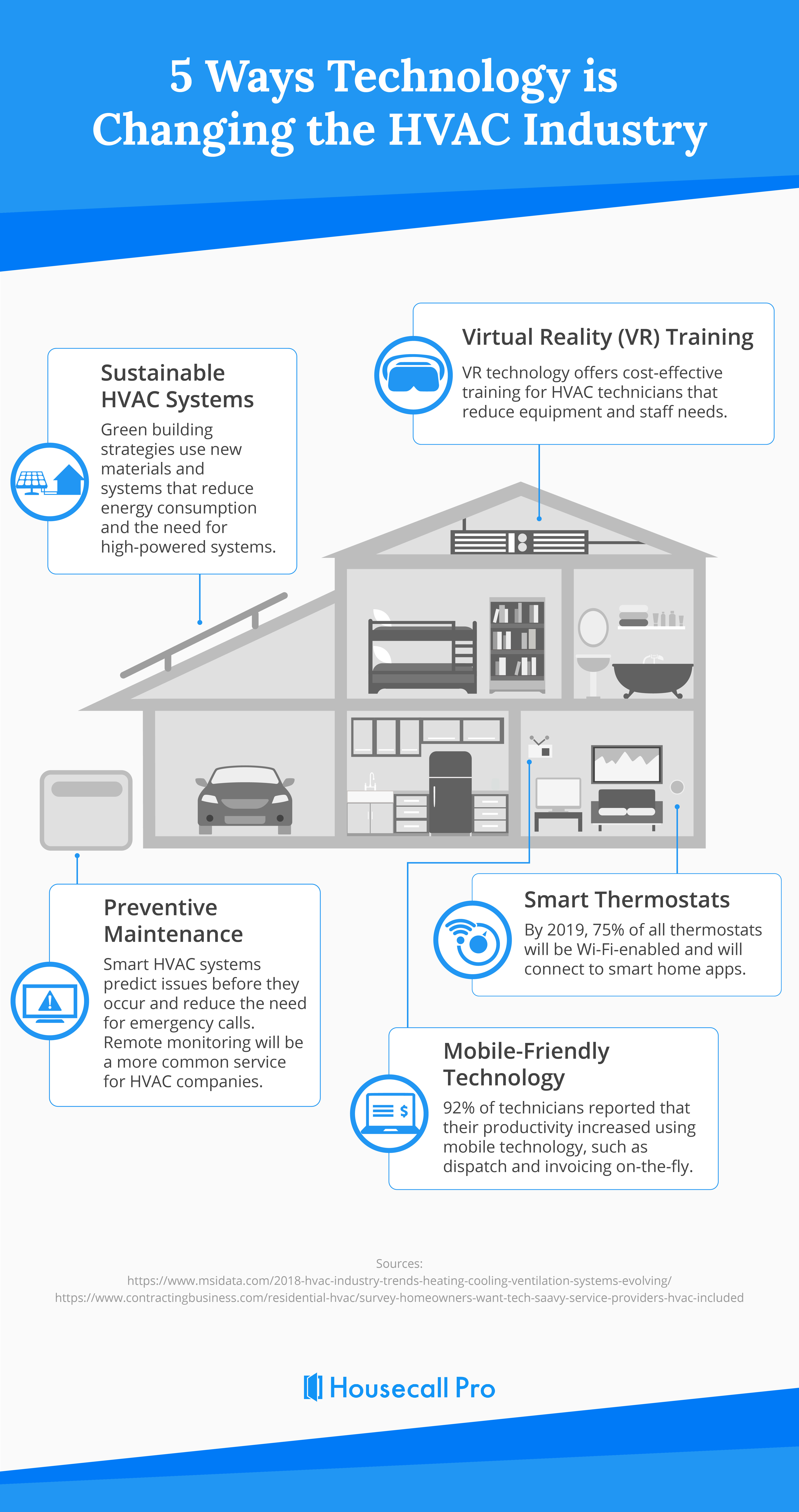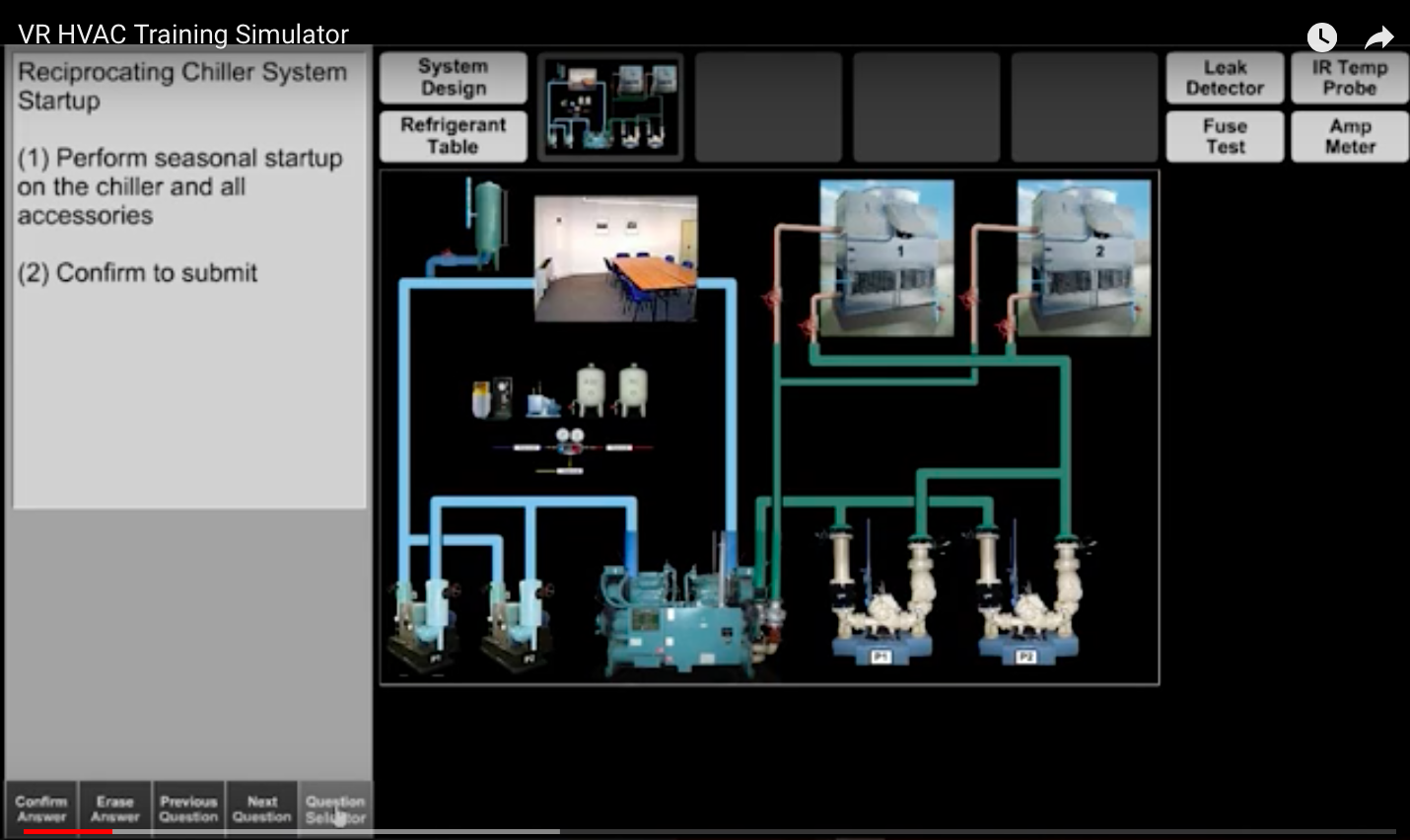New technology, such as artificial intelligence and virtual reality, are changing the heating and air conditioning industry in every way. To keep up, HVAC professionals need to understand how customers are using this new technology to monitor their energy usage and plan equipment maintenance. Here are five technology trends that are impacting HVAC companies.
1. New sustainable homes use alternative heating and cooling options
New buildings are being designed to use minimal energy to heat and cool the property. According to Grainger, green building strategies go beyond sealing and insulation and even energy-star appliances. For instance, builders are rethinking ventilation systems to use more natural airflow, and specialized building materials provide a more constant building temperature which reduces the need for high-powered HVAC systems. Solar and geothermal systems are becoming more cost-effective options.
2. Smart thermostats connect to home monitoring systems
In a recent survey by Emerson Commercial and Residential Solutions, seventy-five percent of thermostats will be Wi-Fi-enabled by 2019. And these Wi-Fi-enabled programmable devices do more than just pre-set a temperature. Consumers search for products that can connect other smart home systems, such as Samsung SmartThings or Amazon Echo.
Smart thermostats allow residents to monitor their home – including energy consumption and temperature – wherever they go.
3. Smart systems increase preventive maintenance
Smart HVAC systems are predicting when maintenance is needed before there’s a real issue. This new trend can change your relationship with your customers from someone they call in an emergency to someone they reach out to for regularly scheduled check-ups.
While preventive maintenance might cut down on emergency house calls, smart systems open up new avenues to provide service and expertise to your customers. It’s becoming more common for residential and commercial customers to have systems designed for remote monitoring. HVAC professionals can begin to monitoring energy usage, suggest maintenance, and offer personalized suggestions for ways to improve energy efficiency.
4. Customers expect tech-savvy services and technicians
Customers expect HVAC services to be easy-to-book and easy-to-pay with more information about their work order readily available in one place.
They want tech-savvy customer-service options, but they also want tech-savvy technicians. In a recent study by Verizon Telematics, two-thirds of consumers said they wouldn’t use a home service professional a second time that wasn’t tech savvy.
This works out well for the 78 percent of service professionals already using mobile apps on the job. According to the same study, 92 percent of technicians reported that their productivity increased using mobile technology.
When you employ mobile-savvy technicians, consider training them on more than just your company’s internal business tools. Samm’s Heating and Air Conditioning owner, Paul Sammataro, explains how his technicians often demo smart-home automation to their customers using their own cell-phones and tablets.
5. Virtual reality (VR) training for HVAC professionals
Virtual reality is becoming a cost-effective way to train new employees or current staff training on new equipment or working on advanced certifications.
For instance, Tauris McBride, founder of Tauris Tech, uses VR training to prepare his students for the New York City Refrigeration license exam. Check out his training simulator on Youtube.
Using virtual simulators, you can walk technicians through the installation and troubleshooting of new equipment, and larger groups can train at once with less equipment needed. As reported by HVACInsider, “VR minimizes the risk and cost because attendees can use virtual components before migrating to real materials.”
HVAC equipment and business software will continue to evolve as new technology gains momentum. But with it comes new opportunities for improved professional training and customer service.



